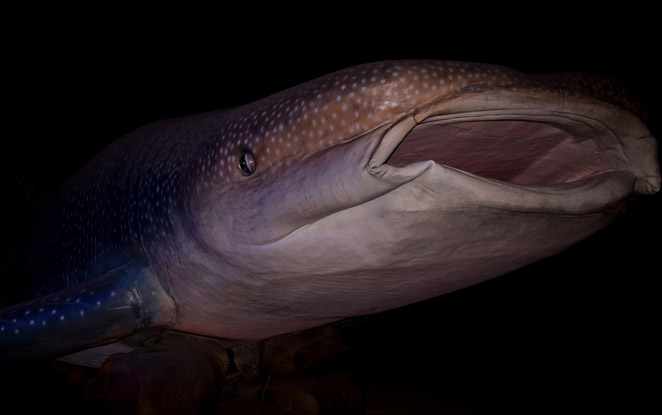Harmless and graceful, the whale shark is the largest fish in the world. They grow to the size of a school bus, but feed on tiny plankton and fish eggs. With their large mouths wide open, they filter feed while moving slowly through the waters. Owing to their large size, they survive long migrations in their attempt to reach their abundant sources of food.
Many scientists believe that some of these spotty fish swim across oceans. The whale sharks achieve this amazing feat in order to find their food. There are many such amazing facts about whale sharks that are unknown to many. Here, we’ve presented some of them:
1. They grow up fast
Adult whale sharks have few enemies in the underwater world. However, juveniles among them fall prey to predators like marlins and blue sharks. So, nature has given this species of sharks the ability to grow big rather quickly. A newborn whale shark went from 1.7 pounds to over 333 pounds in 3 years and 68 days. This happened in the Oita Ecological Aquarium in Japan.
It is worth noting here that young whale sharks don’t keep growing for long like human babies. Once they attain a particular size, their growth rate slows down. By then, these creatures are big enough to scare away almost all living being in the oceans.
2. They can feed through suction
Whale sharks feed on plankton, small fish, krill, and fish eggs. These are very small life forms and these spotted fish swallow their food completely. Their gills have a mesh-like network of ‘gill rakers’. They are long, cartilaginous bars. With the help of these gill rakers, even the millimeter-sized food is trapped while water is allowed to escape. The meal is then forced down the narrow throat of these sharks and digested.
Sometimes, these spotty fish swim lazily with its mouth wide open. This feeding technique allows them to swallow all the food items that might come in its way. They change their tactics at the sight of a dense cluster of potential targets. The whale sharks rapidly open and close their jaws creating suction and pulling the targets into its mouth.
3. Mothers deliver live young whale sharks
There was much debate for many years about how baby whale sharks come into the world. It was then revealed in 1995 that this fish species is ovoviviparous. This fact came to light when a pregnant female was harpooned near Taiwan. The young hatch from eggs stored inside the mother’s body just like some snakes. They get out of their mother’s womb when they are fully-formed.
4. They can journey into greater depths
A study was conducted on six different whale sharks in 2003 and 2004 near Western Australia. A team led by the biologist S.G. Wilson tracked the long-term movements of the spotty fish. The results of the study showed that the fish species mostly avoided deep plunges.
More than half of their time was spent within 100 feet of the surface. Soon, it was discovered that they occasionally traveled further down. One of the whale sharks spent 12 continuous hours at a depth of 3215 feet. This wasn’t an isolated case.
The tagged sharks were recorded hitting between 2200 and 3200 feet off the coasts of India. No one could give a precise explanation why these sharks journeyed so deep into the oceans. This probably had something to do with gathering food or maintaining their body temperature.

